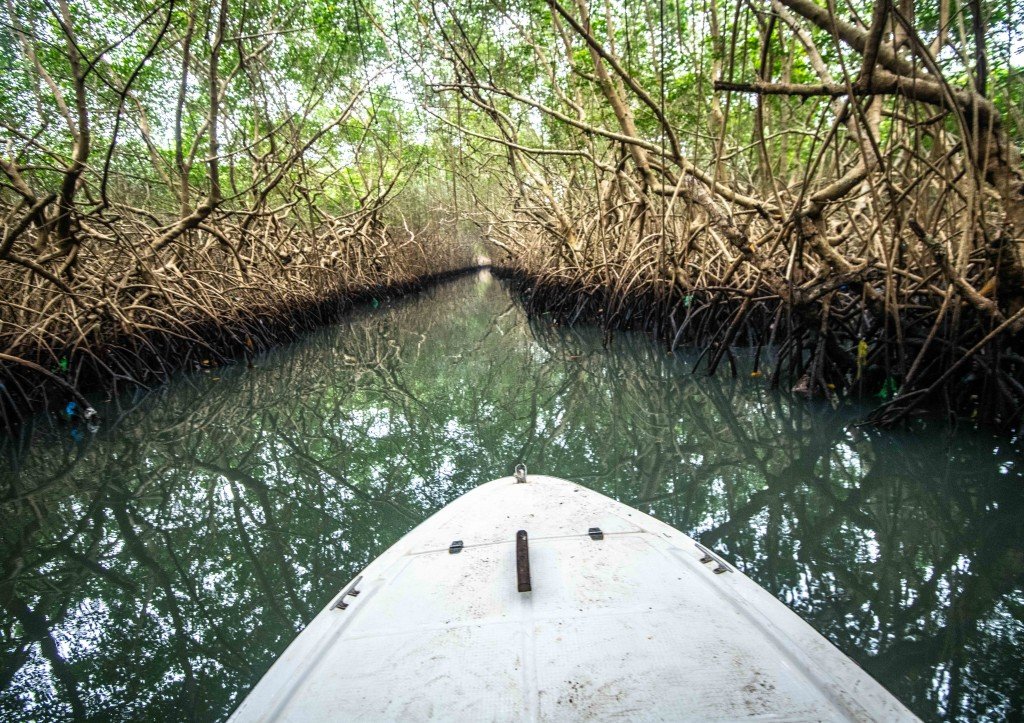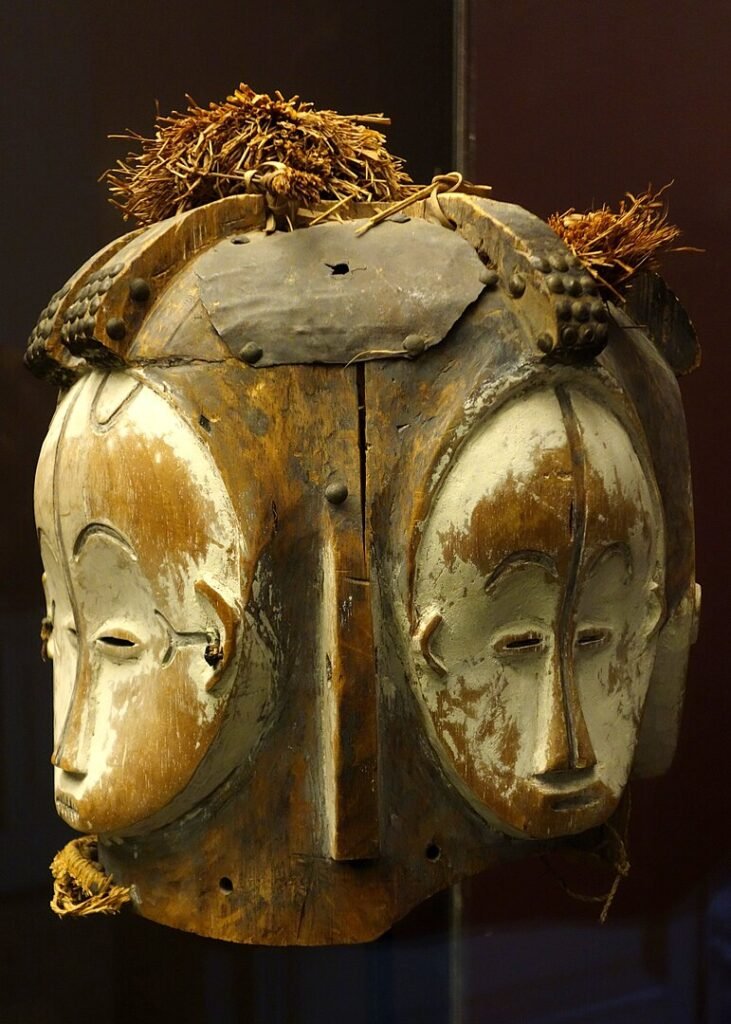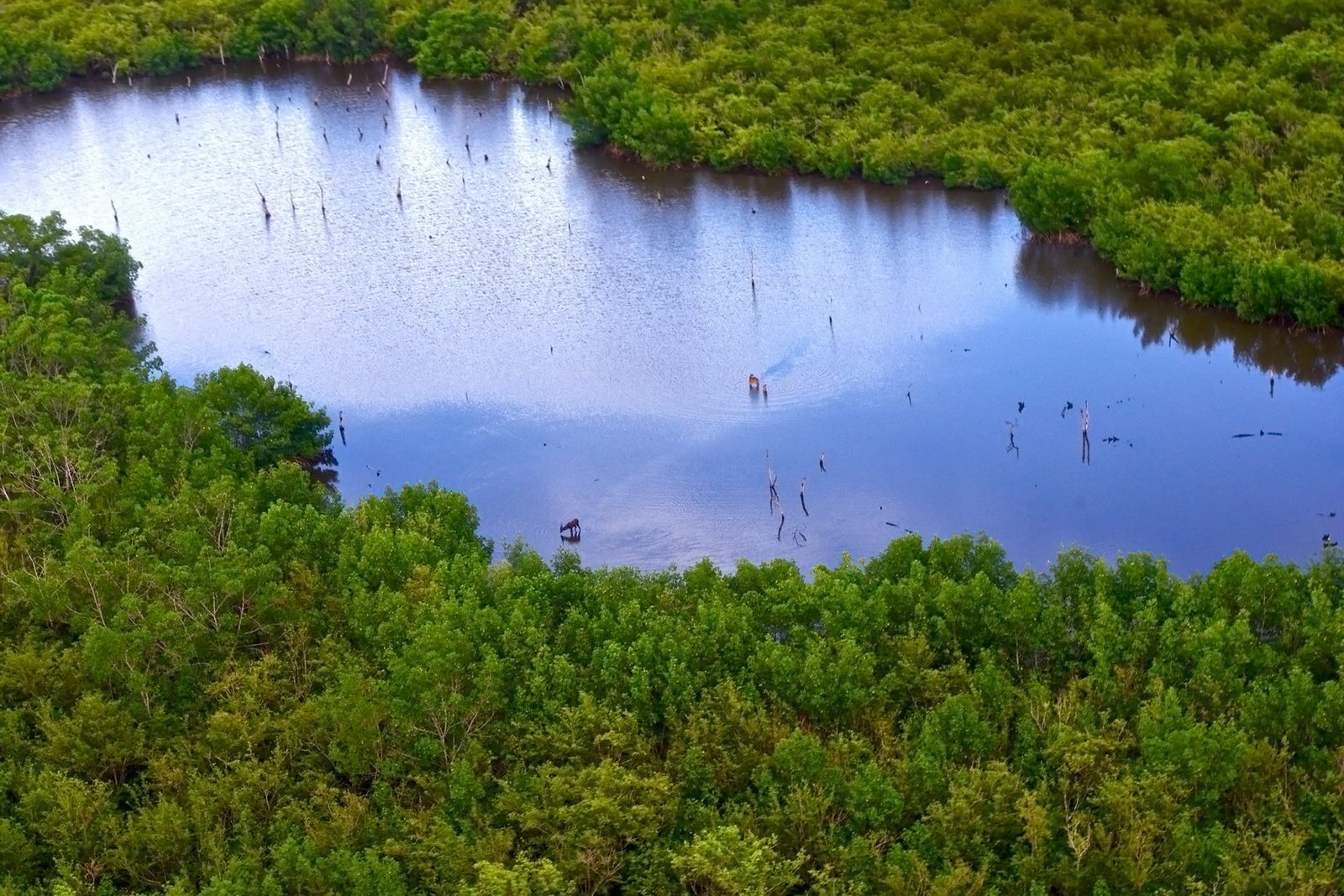Akanda National Park stands as a true example of Gabon’s commitment to preserving its natural heritage. With its breathtaking landscapes, abundant wildlife, and cultural significance, the park is a must-visit destination for anyone seeking an immersive experience in the heart of Africa’s natural splendor.
Just 27 kilometers away from the bustling city of Libreville lies the peaceful sanctuary of Akanda National Park right in the west of Gabon. This West African country is a perfect destination for wildlife lovers seeking to connect with blissful nature (lush green forests cover more than 80% of the country!). Gabon is home to an extraordinary diversity of plant life, with an estimated 6,000 to 10,000 species thriving within its borders.
Beyond their botanical allure, Gabon’s forests contribute significantly to the nation’s economic and environmental well-being. Timber extraction fuels the economy, while the expansive greenery provides essential ecosystem services, purifying the air and water. However, these life-sustaining forests face pressing threats, including uncontrolled logging, agricultural expansion, and the specter of climate change.
Between 1990 and 2005, Gabon lost an average of 10,100 hectares of forest per year, representing an average annual deforestation rate of 0.05%. In total, between 1990 and 2005, Gabon lost 0.7% of its forest cover or around 152,000 hectares. Only 0.3% of Gabon is protected under IUCN categories I-V.
In response to these threats, the Gabonese government took a decisive step in 2002 by establishing 13 new national parks, including Akanda National Park. These protected areas stand as strongholds, safeguarding some of the country’s most biodiverse landscapes.
Akanda National Park: Wildlife in Gabon
Looking to escape the frenzy of Libreville? Consider escaping to the lush green wilderness of Akanda National Park, where you can bask in the serene setting of the verdant mangroves, unspoiled beaches and encounter rich wildlife. This enchanting haven, spanning 540 square kilometers, is a sanctuary for a remarkable array of flora and fauna, making it an irresistible destination for nature enthusiasts and eco-tourists alike.
A Realm of Mangroves and Beaches

Akanda’s captivating landscape is dominated by extensive mangrove forests, stretching as far as the eye can see. These intricate ecosystems, teeming with life, play a vital role in protecting the coastline, shielding it from erosion, and providing a nursery for countless marine species. As you venture deeper into the park, pristine beaches beckon, their golden sands inviting leisurely strolls and refreshing dips in the turquoise waters. These tranquil shores offer a glimpse into the park’s rich marine life, from playful dolphins to majestic sea turtles nesting on the shore.
An Eclectic Range of Wildlife

Akanda’s true magic lies in its symphony of wildlife. The park is a haven for migratory birds, with over 35,000 Palearctic waders flocking to its wetlands each year. The vibrant birdlife includes the diminutive little stint, the elegant grey plover, and the endemic yellow-breasted apalis, their melodious songs filling the air.
The park’s lush forests provide refuge for a diverse array of terrestrial creatures, including the elusive swamp boubou, a captivating bird known for its melodious song. Crustaceans and fish thrive in the park’s waterways, with bonga shad and flathead mullet playing a crucial role in the ecosystem.
Akanda National Park – Endangered Species
Akanda National Park serves as a critical haven for endangered marine turtles, providing them with essential nesting grounds. Olive ridley turtles and leatherback turtles, the largest of all sea turtles, grace the park’s beaches; their nesting rituals are a testament to the park’s pristine environment.

A Cultural Mosaic

Akanda National Park is not merely a wildlife sanctuary; it is also a cherished part of the cultural fabric of the local Fang, Benga, and Sekiani communities. For generations, these communities have lived in harmony with the park’s diverse ecosystems, drawing sustenance and spiritual fulfillment from its rich resources.
Fishing, a time-honored tradition, has been the mainstay of the Fang and Benga communities. The park’s mangroves and coastal waters teem with fish, providing a bountiful source of protein and livelihood. Traditional fishing methods, passed down through generations, ensure a sustainable balance between harvest and resource conservation.
Agriculture, too, has played a vital role in the lives of these communities. The park’s fertile soils support the cultivation of crops such as cassava, plantains, and bananas. These crops provide essential sustenance for families, while surplus produce is often traded or sold, contributing to the local economy.
Hunting, though practiced with restraint and respect for the park’s wildlife, has also been a part of the communities’ cultural heritage. Hunting provides meat for consumption and serves as a rite of passage for young men.
In recent years, tourism has emerged as a new source of livelihood for the communities. Residents serve as guides, boatmen, and lodge operators, providing visitors with unique insights into the park’s natural wonders and cultural heritage. Much is needed regarding practicing sustainable tourism to not only generate income but also foster a sense of pride and stewardship among the communities.
Authorities should encourage a harmonious relationship between the local communities and Akanda National Park. Children at school should be taught to develop a deep understanding of the interconnectedness of all living things. The local traditional practices should be rooted in respect for nature to ensure the park’s long-term sustainability.
Find out about other national parks in Gabon
A Call to Conservation
Despite its remarkable natural beauty, Akanda National Park faces several threats, including overexploitation of mangroves for wood, unsustainable fishing practices, and uncontrolled tourism. However, conservation efforts are underway, with the ongoing preparation of a management plan for the national park offering hope for the future.
Visitor Information – Akanda National Park, Gabon
- Location: Situated along the Mondah and Corisco bays, Akanda National Park is easily accessible from Libreville, making it a perfect day trip destination.
- Wildlife: The park is home to an abundance of wildlife, including migratory birds, marine turtles, and various terrestrial creatures.
- Activities: Visitors can enjoy various activities such as birdwatching, hiking, kayaking, and swimming.
- Permits: Permits are readily available at the ANPN (National Parks Board) office in Libreville.
- Access: Access to the park is possible via pirogue, with daily rates starting from CFA100,000.
List of Animals to See in Akanda National Park:
- Migratory birds: over 35,000 Palearctic waders
- Marine turtles: olive ridley turtles and leatherback turtles
- Terrestrial creatures: elusive swamp boubou, bonga shad, flathead mullet
